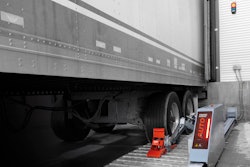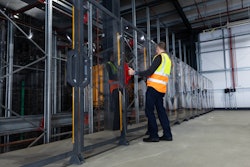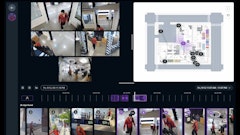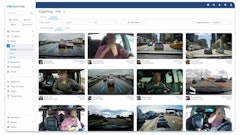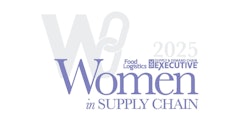
When road safety concerns, insurance costs, and employee accountability are increasingly under scrutiny, organizations must prioritize their collaborative efforts to keep their drivers and communities safe. With vehicle-related incidents remaining a significant liability and a source of financial strain, companies must focus their approach to managing driver safety programs.
According to the Department of Transportation's 2024 Progress Report on the National Roadway Safety Strategy, vehicle fatality rates saw significant spikes in 2020 and 2021, highlighting a decade where progress has stalled after earlier improvements. Despite slight advancement in recent years, the National Highway Traffic Safety Administration estimates that 40,990 people died in motor vehicle traffic crashes in 2023. The most recent economic figures indicate that in 2019, traffic crashes cost America $340 billion. The persistence, severity, and consequences of road safety concerns underscore how critical it is for organizations and drivers alike to make improvements.
By fostering open lines of communication, promoting safety training initiatives, and establishing clear expectations, organizations can build a safer culture through accountability and responsibility. A structured, collaborative relationship between administrative teams and drivers not only helps mitigate risks and control insurance costs but also sets a precedent for shared responsibility in the workplace.
The importance of collaborative driver safety
Administrative teams and drivers are pivotal in safety programs, directly influencing organizational liability and public safety. Administrators develop and enforce protocols—such as driver training and vehicle maintenance—to meet legal standards and mitigate risk. Drivers, as the frontline, bring these protocols to life through safe practices, routine checks, and timely issue reporting. When both teams work in sync, they not only reduce liability but also enhance safety, preventing accidents with potentially serious consequences for individuals, the company, and the community.
For times when issues do arise, a well-structured response plan is essential to avoid the delays and risks of improvisation. While real incidents may call for situational adjustments, a predefined plan engages the right people immediately, triggers necessary actions, and ensures stakeholders are informed and ready to assist. This plan should clarify who owns which issues, the support they can call upon, and the communication channels in place. For critical scenarios, practice runs allow team members to walk through a simulated event, refining the plan through each iteration until it’s optimized for real-world readiness. Together, these coordinated efforts foster a proactive safety culture, equipping both drivers and administrative teams to respond effectively and uphold high safety standards.
How technology can enhance safety and support teams
From an organizational perspective, technology can be a critical aid to administrative teams responsible for overseeing driver compliance and safety. Utilizing technology tools can improve the ease of tasks such as motor vehicle record (MVR) checks and insurance verifications, while even promoting safer driving through strategically informed trainings.
Thorough MVR checks and diligent insurance monitoring are essential tactics for fostering a safer, more compliant driving environment. Software solutions make these processes more effective and scalable. Given that 75% of suspended drivers continue driving, it's crucial for companies to verify employees' eligibility to drive for work and detect risky driving habits. Automated processes can help teams stay updated on new infractions and violations in employees' MVRs and through proactive alerts and reports, help identify risky driving behavior. Once detected, organizations can proactively address issues through targeted training or adjusted driving privileges. By providing data-driven insights for targeted intervention, companies can implement tailored safety training programs to address identified issues. This proactive approach helps mitigate risks, reinforces safer driving habits, and demonstrates the organization’s commitment to a culture of safety.
Similarly contributing to a culture of safety, insurance monitoring software ensures that all drivers maintain the required coverage, providing instant alerts for lapses or expirations to reduce liability exposure. Through automation, this important step can be taken without levying a significant administrative burden on admins or employees.
At their core, software tools not only streamline compliance and reduce manual workload but also enhance visibility and control over safety protocols, reinforcing the organization’s commitment to safety, accountability, and ethical standards across the board.
Best practices for a culture of shared responsibility
Regular communication, consistent training, and shared accountability foster a proactive safety mindset among drivers and administrative staff. Frequent updates and open dialogue keep everyone aligned on safety expectations, while ongoing training helps reinforce essentials. Shared accountability emphasizes that maintaining high safety standards is a collective effort, instilling a sense of ownership at all levels.
As driver safety programs grow, leadership can only stay on top of day-to-day safety issues by establishing a centralized, easy-to-use reporting system that drivers and administrative teams are trained to use consistently. Without this, safety concerns can get lost in the shuffle of emails, messages, and scattered reports, leading to critical gaps in addressing risks. A unified, straightforward method for logging incidents—whether a dedicated safety portal or a monitored hotline—enables clearer prioritization, trend analysis, and measurable improvements in response time. This ensures that while each report may be one of many, it remains a priority, fostering a culture where both driver and administrative safety concerns are promptly addressed to maintain high standards.
Mutual commitment not only strengthens adherence to protocols but also actively reduces the likelihood of accidents, creating a safer environment for everyone involved.
A safer road forward
By creating a unified approach to driver safety, organizations can reduce risks, improve compliance, and reinforce a culture of mutual responsibility that benefits everyone. The combined efforts of administrative teams and drivers in maintaining high safety standards not only reduces costs and mitigates risks but also sets the foundation for a safer and more conscientious workforce. As organizations face modern challenges in workplace safety, this collaborative model represents a significant step toward ensuring that every journey is undertaken with safety at the forefront.




